allo together.
Many of you despair from the search for a watchmaker. And actually every time an Asian ETA movement flutters into the house you can assume that it feels sandy within the shortest time when winding up. In most cases, I made the experience (also with VR3135 by the way) that the ratchet wheels are not / not enough lubricated.
How you can easily do this work yourself I show you here.
The work is done on a swiss Sellita SW-200, which is identical to the ETA 2824-2.
You can see the movement here: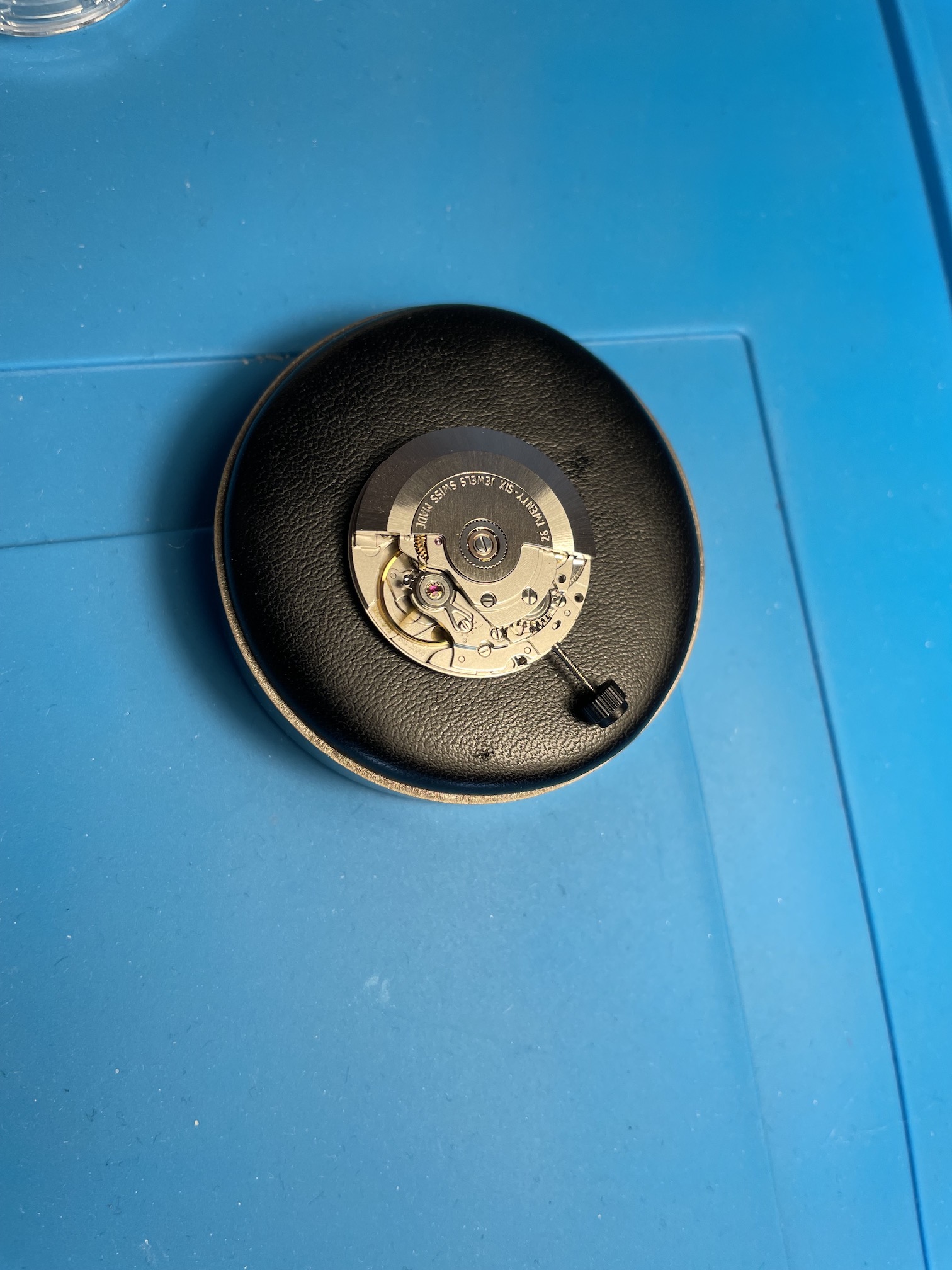
It is recommended to create a dust-free working environment and to wear gloves or finger cots. The movement is clamped in a movement holder, or placed on a soft cushion / sponge so that the top side is not scratched. To understand, the top of the movement (where the date ring is) is DOWN here.
First, we remove the oscillator / rotor by loosening the centrally located screw and using the tweezers to lift the rotor off.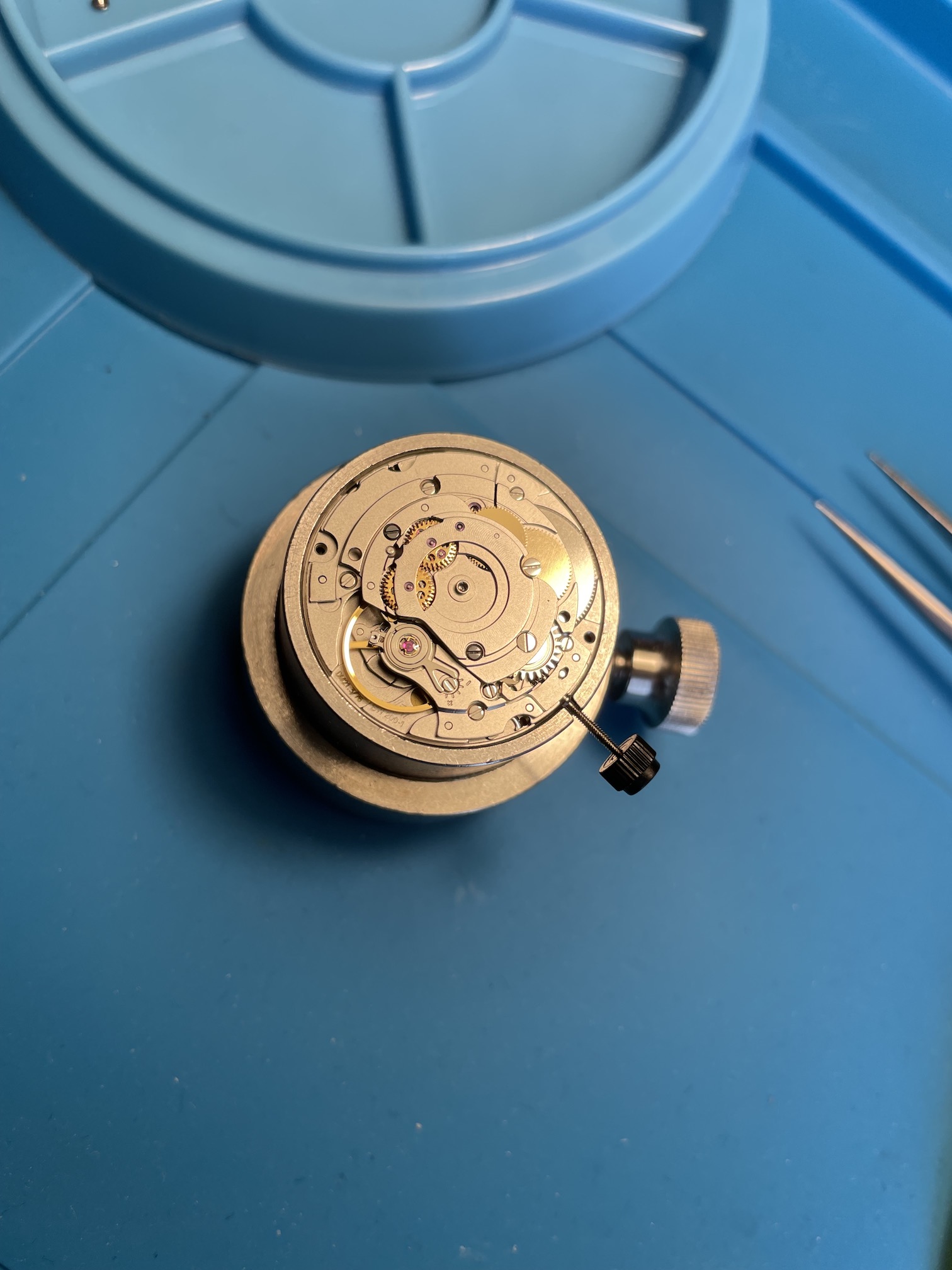
Then we loosen the 2 dark screws that fix the automatics to the PCB and lift the automatics off.
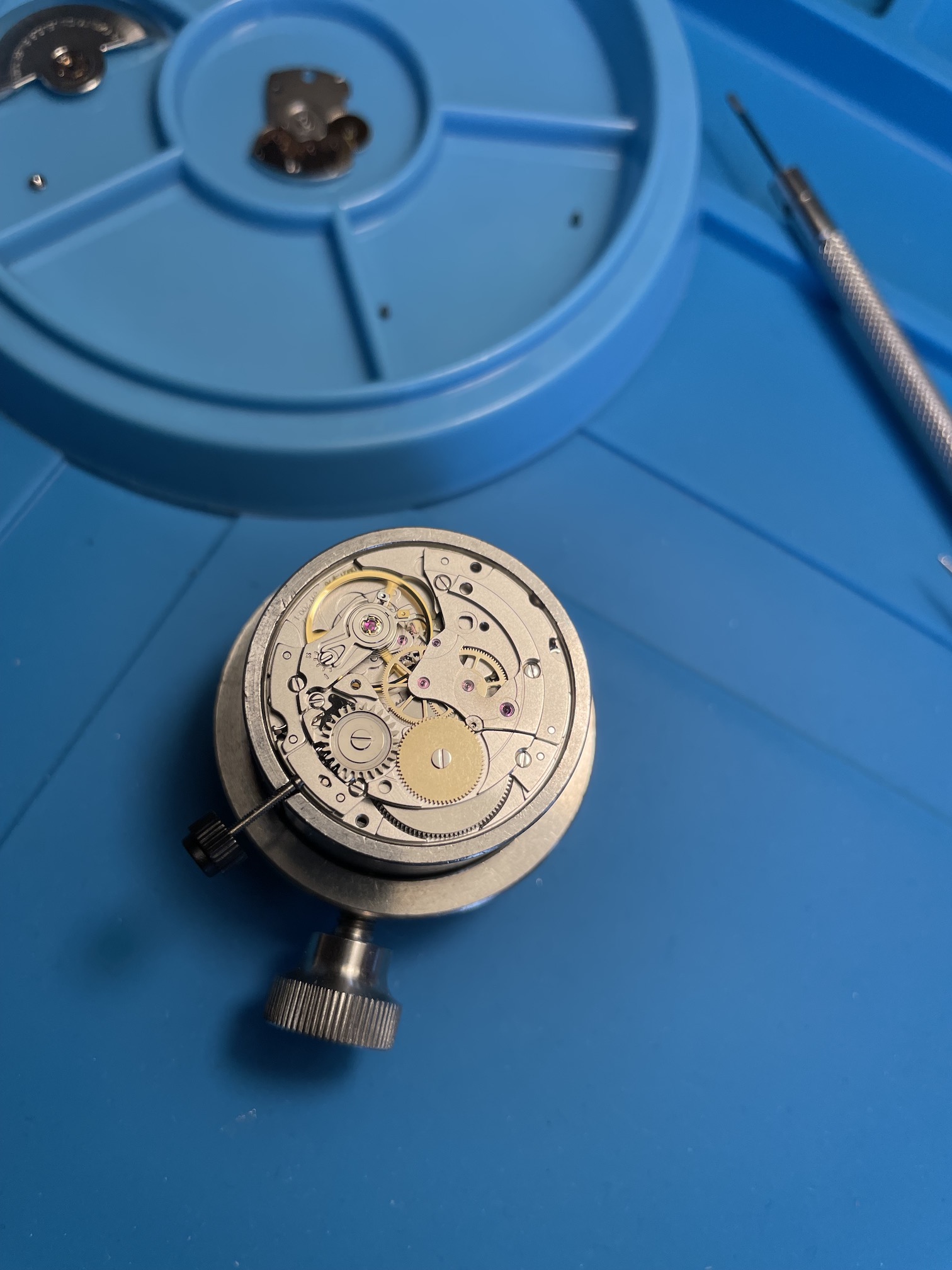
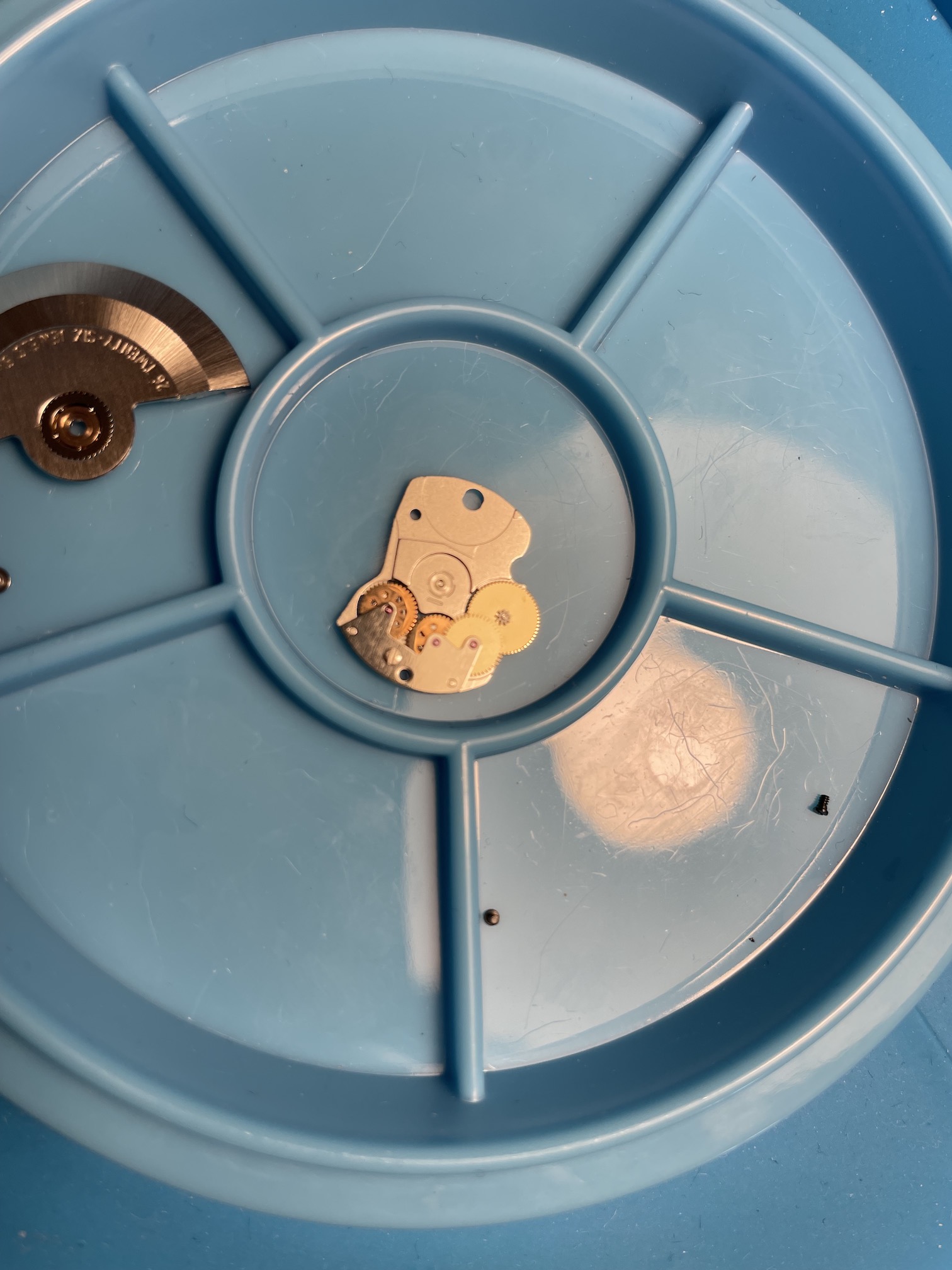
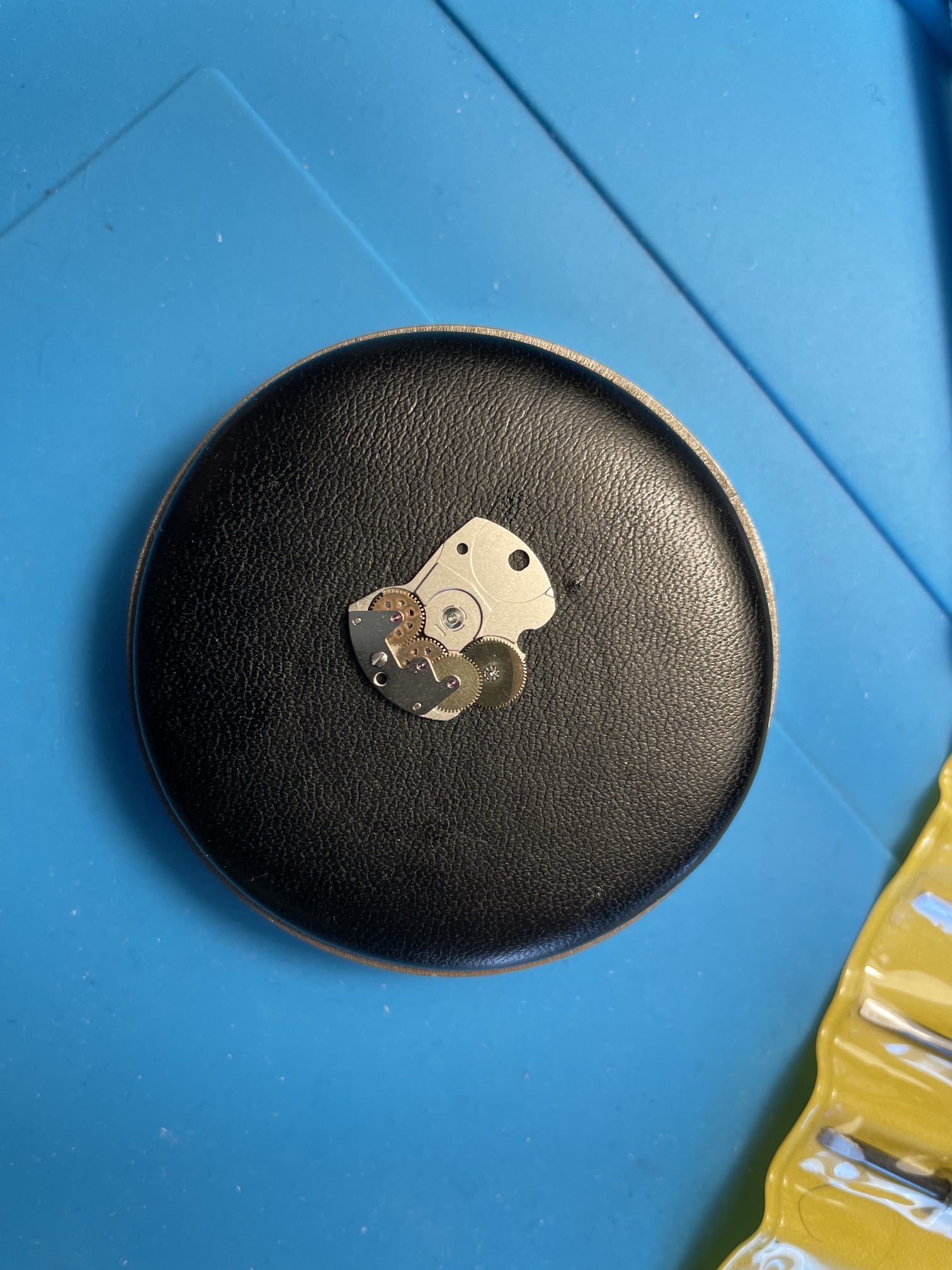
To clean the individual parts, I use cleaning gasoline, together with a very soft toothbrush. For rinsing I use 70% alcohol.
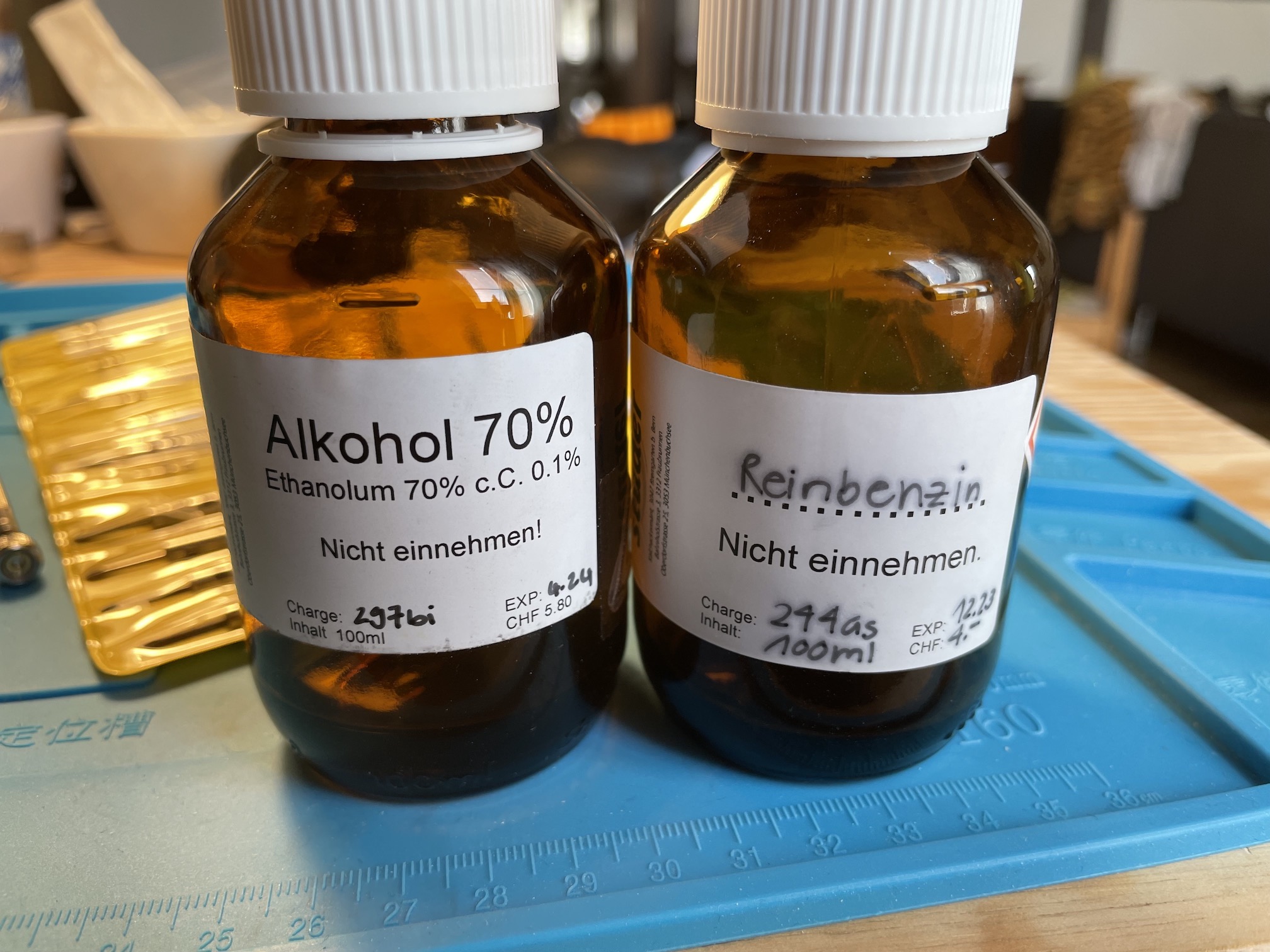
I loosen the only screw on the automatic bridge that holds the 4 wheels together and loosen the wheels. I put all parts except the screw into the cleaning benzine.
After a minute, I brush the gears with the cleaning toothbrush and the corners of the board. I leave the stones (pink) untouched.
Then I take all the components out of the gasoline bath and put them into the alcohol.
This removes any remaining gasoline stains from the components.
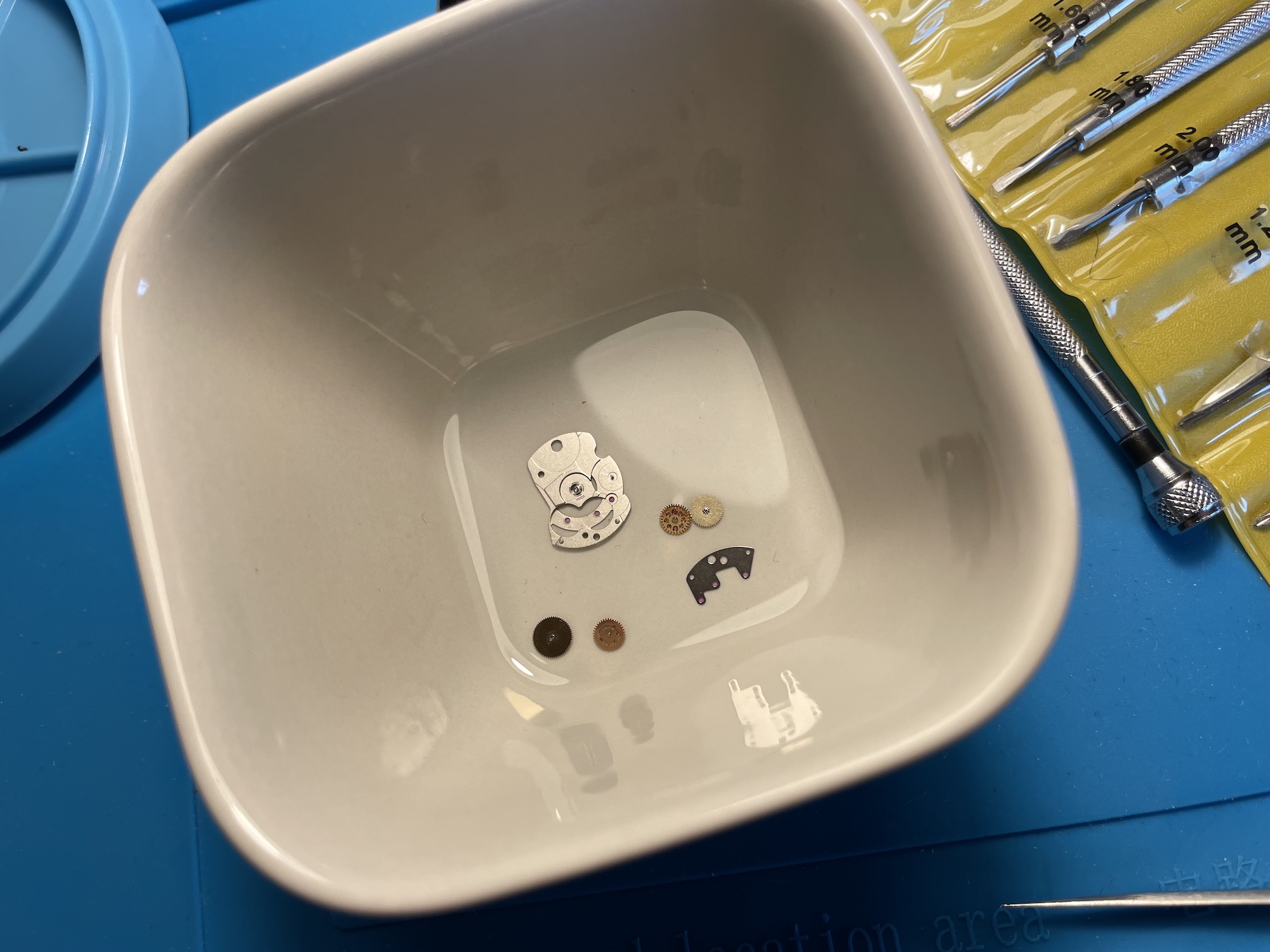
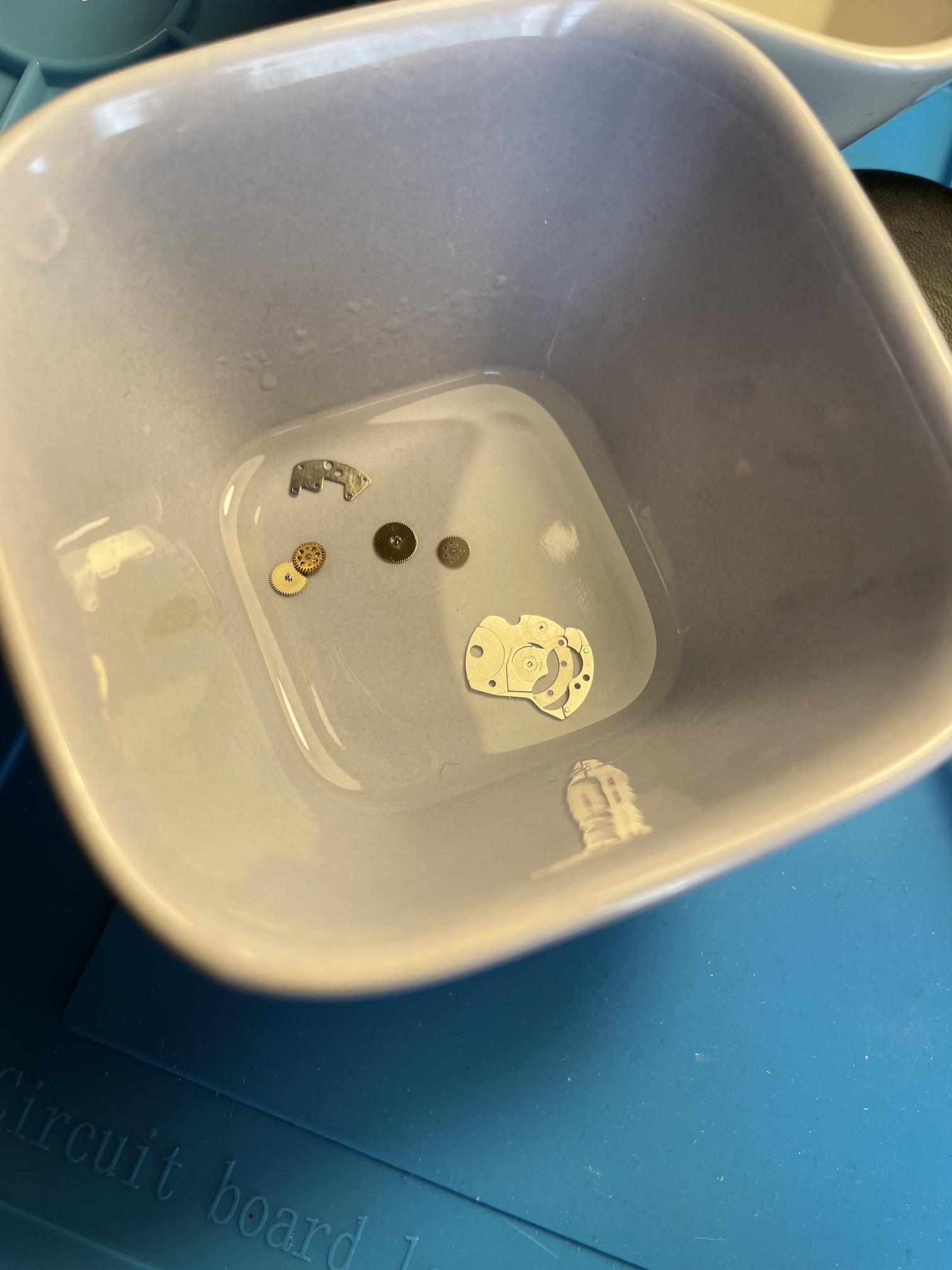
I take each part out of the alcohol bath and blow it dry. I get all parts ready to assemble the automatic.
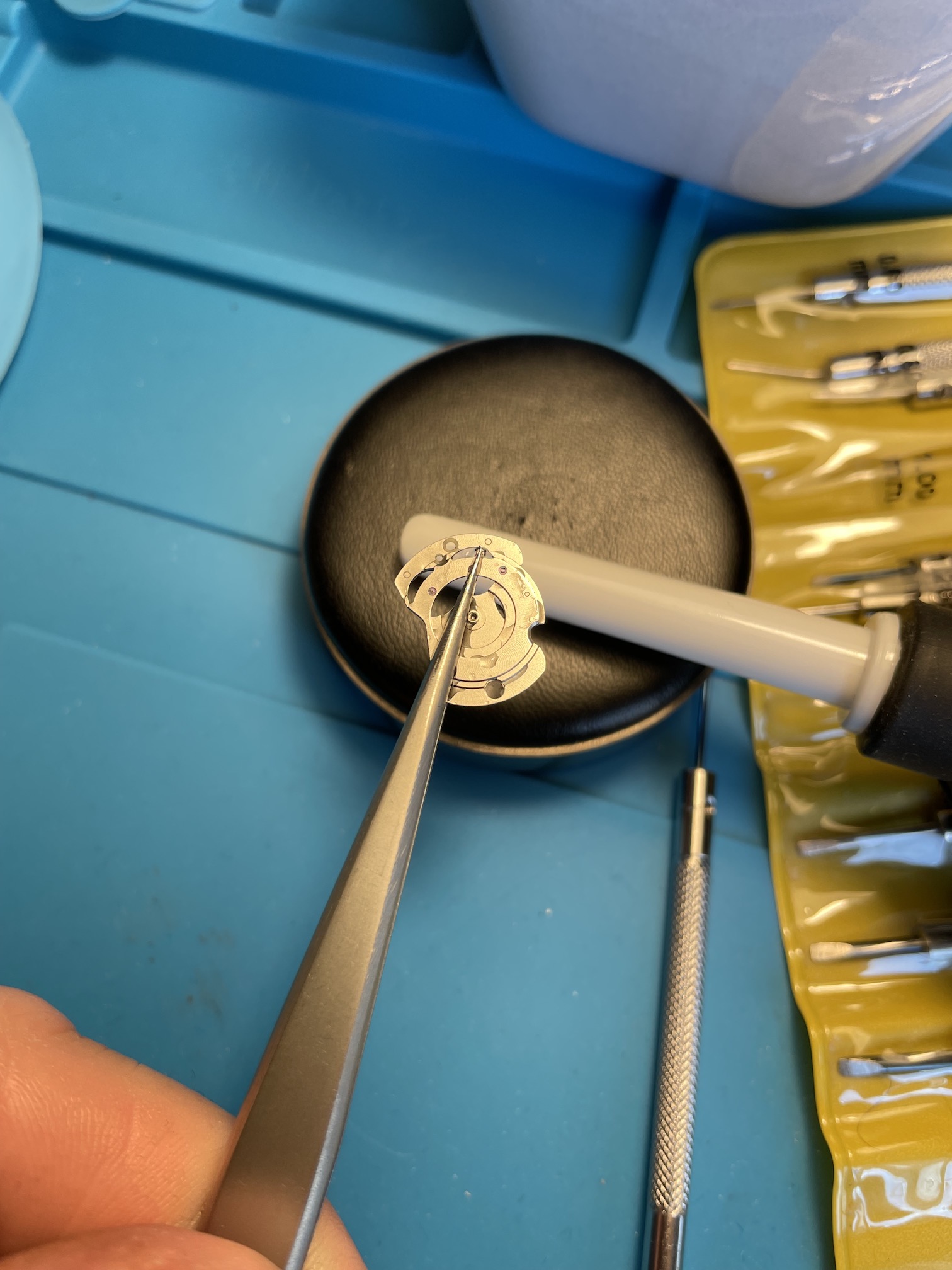
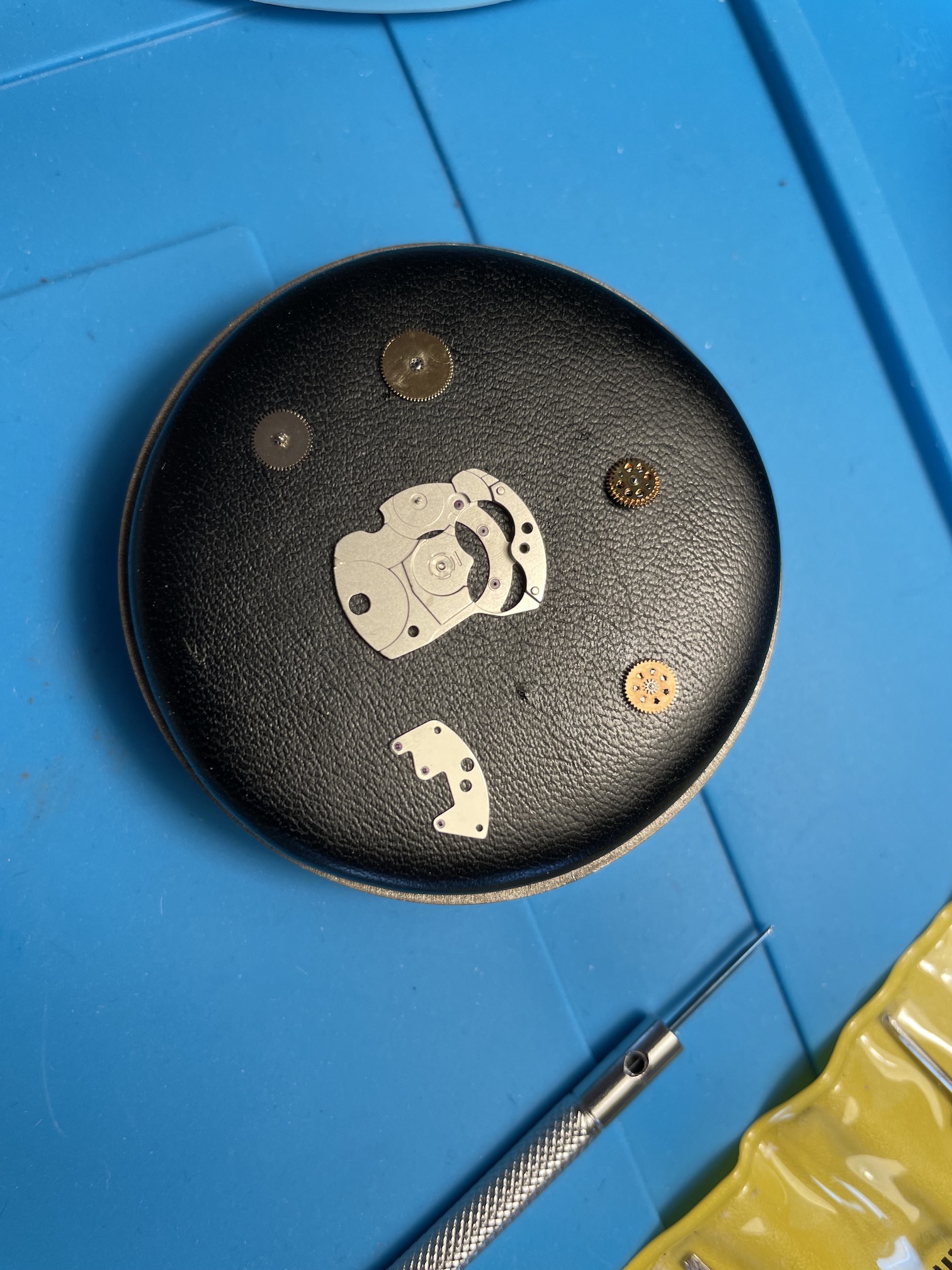
I put a little D5 on the post here: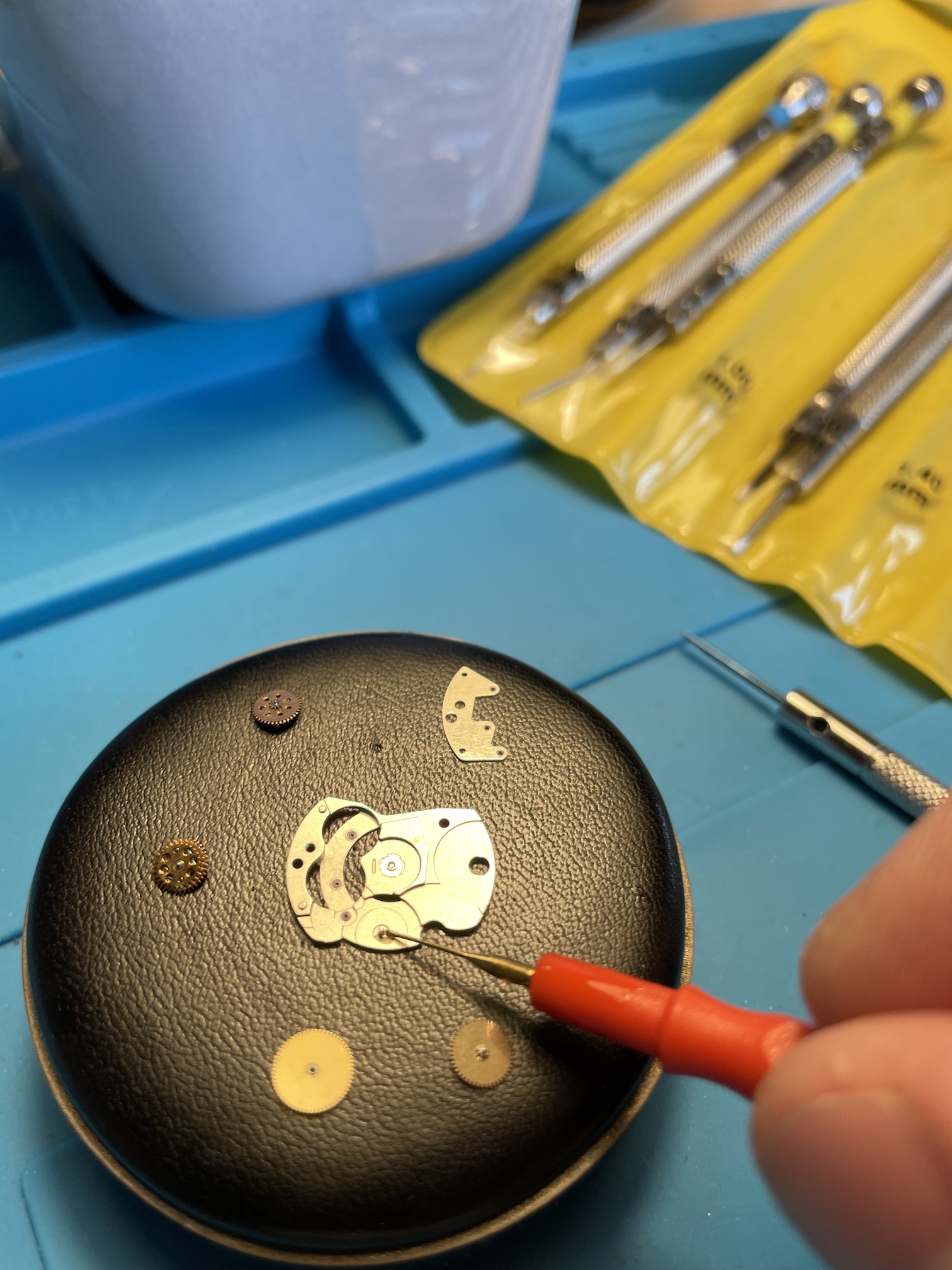
After that, there are 2 options for oiling the stones. I don't really trust the ASIA ETAs in this respect, and already put some oil on the inside. With real ETA or Sellita I oil nothing at all, only after the complete assembly then from both outer sides.
So I mount the ratchet wheels, the ratchet wheel and the reduction wheel.
Then the bridge comes over it and is attached to the screw.
Depending on whether you have already oiled before or not, you should do that now at the latest.
I use Moebius 9010, then check with a toothpick or ceramic tweezers that all wheels turn properly.
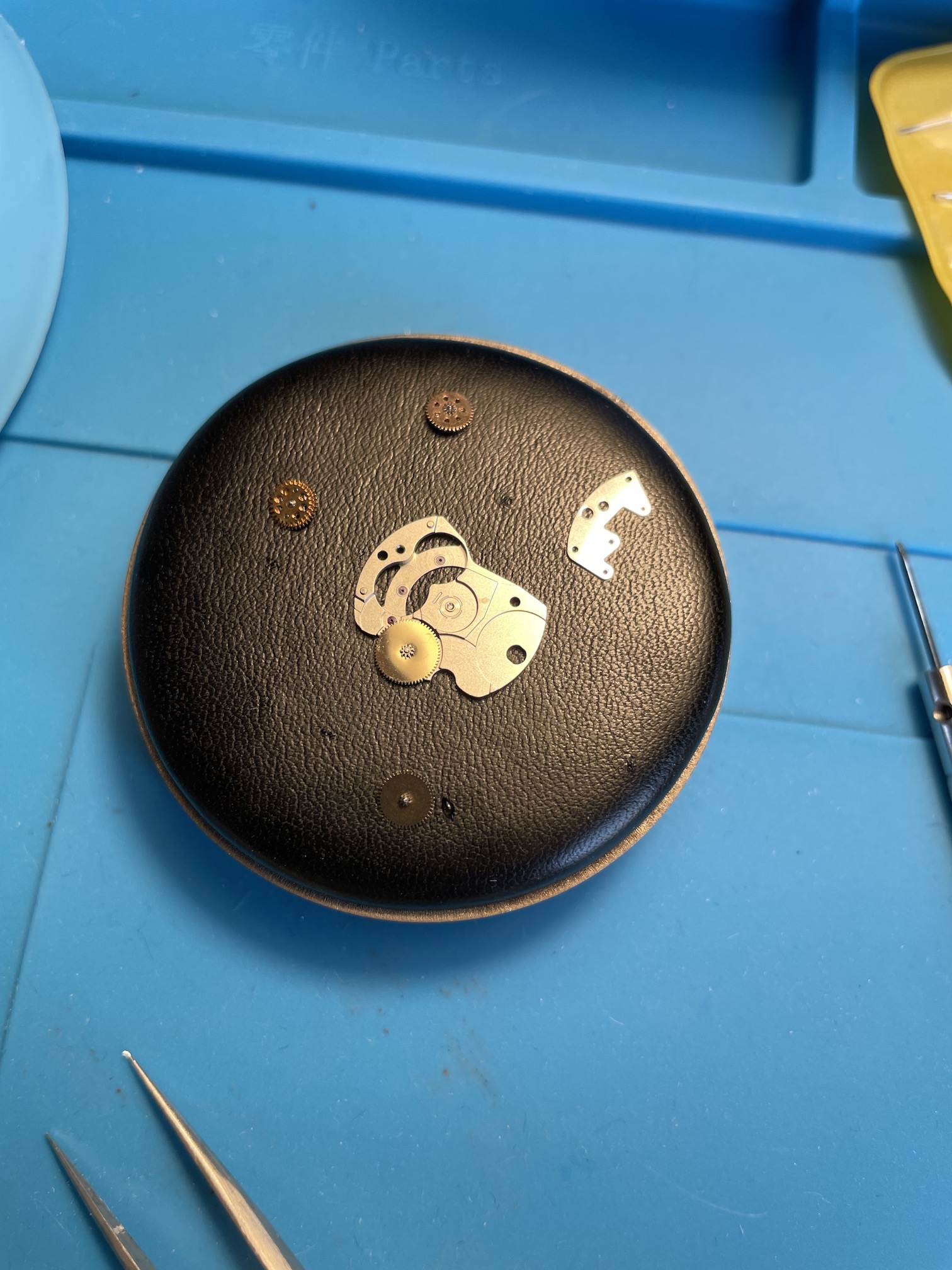
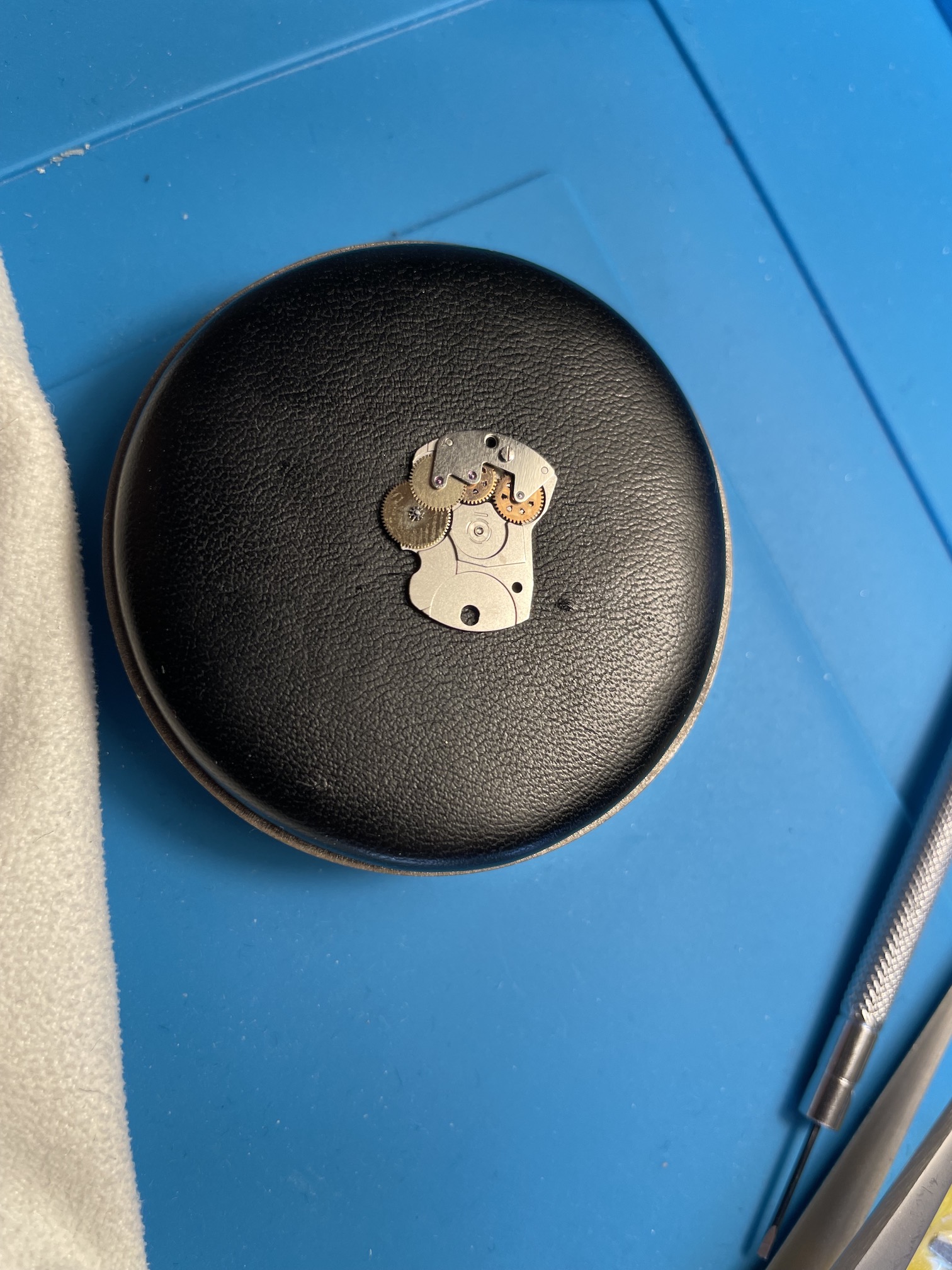
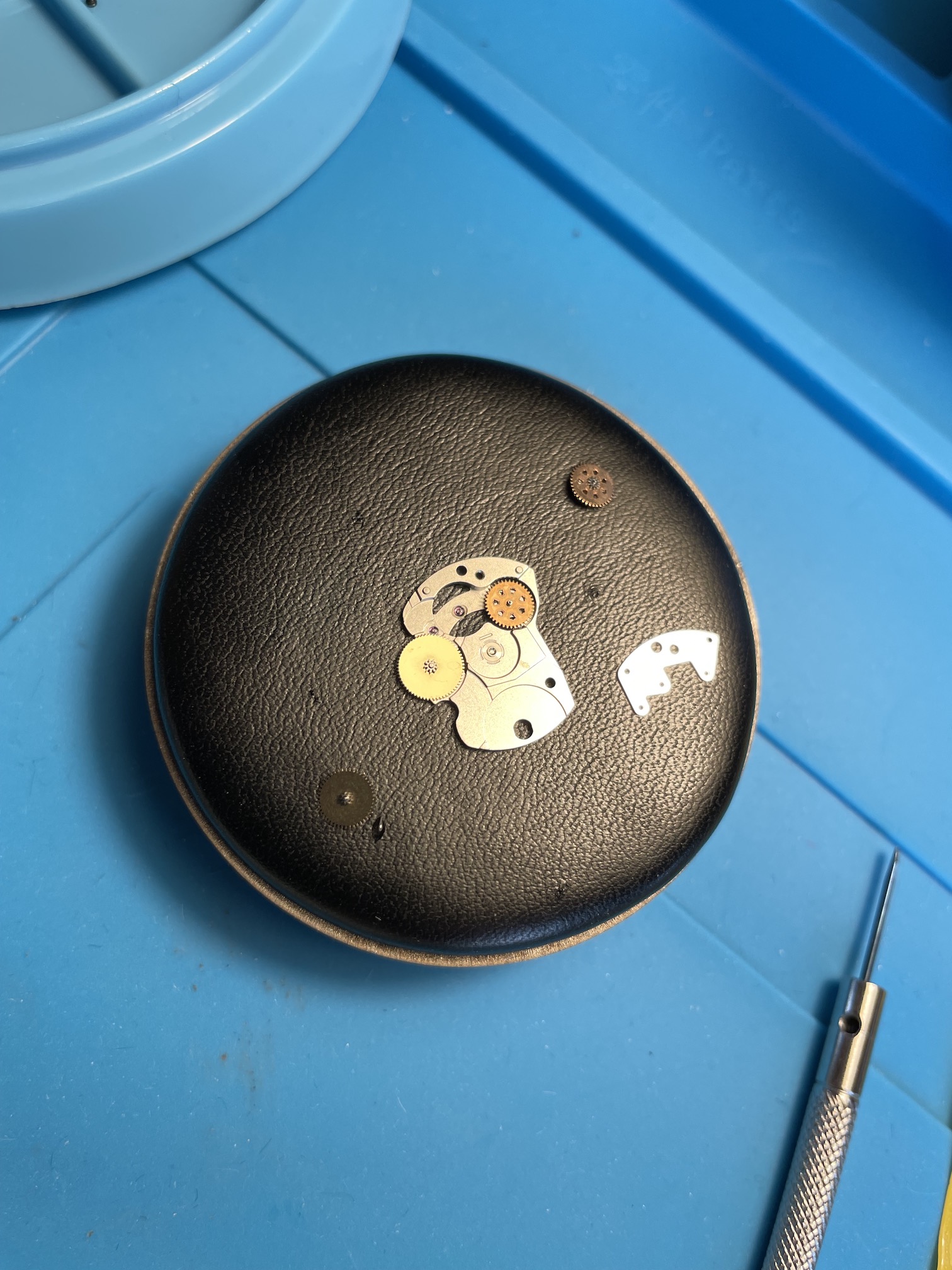
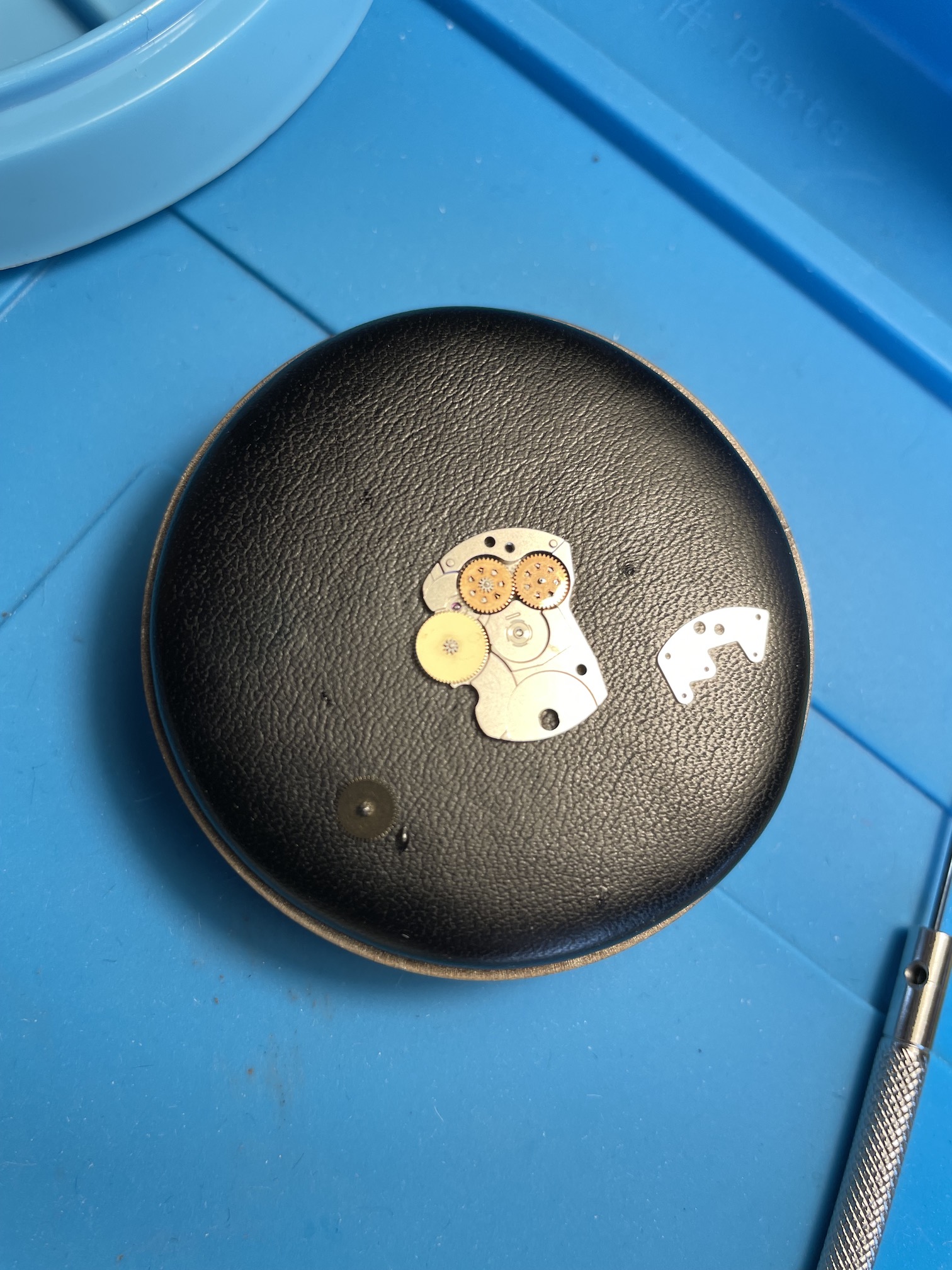
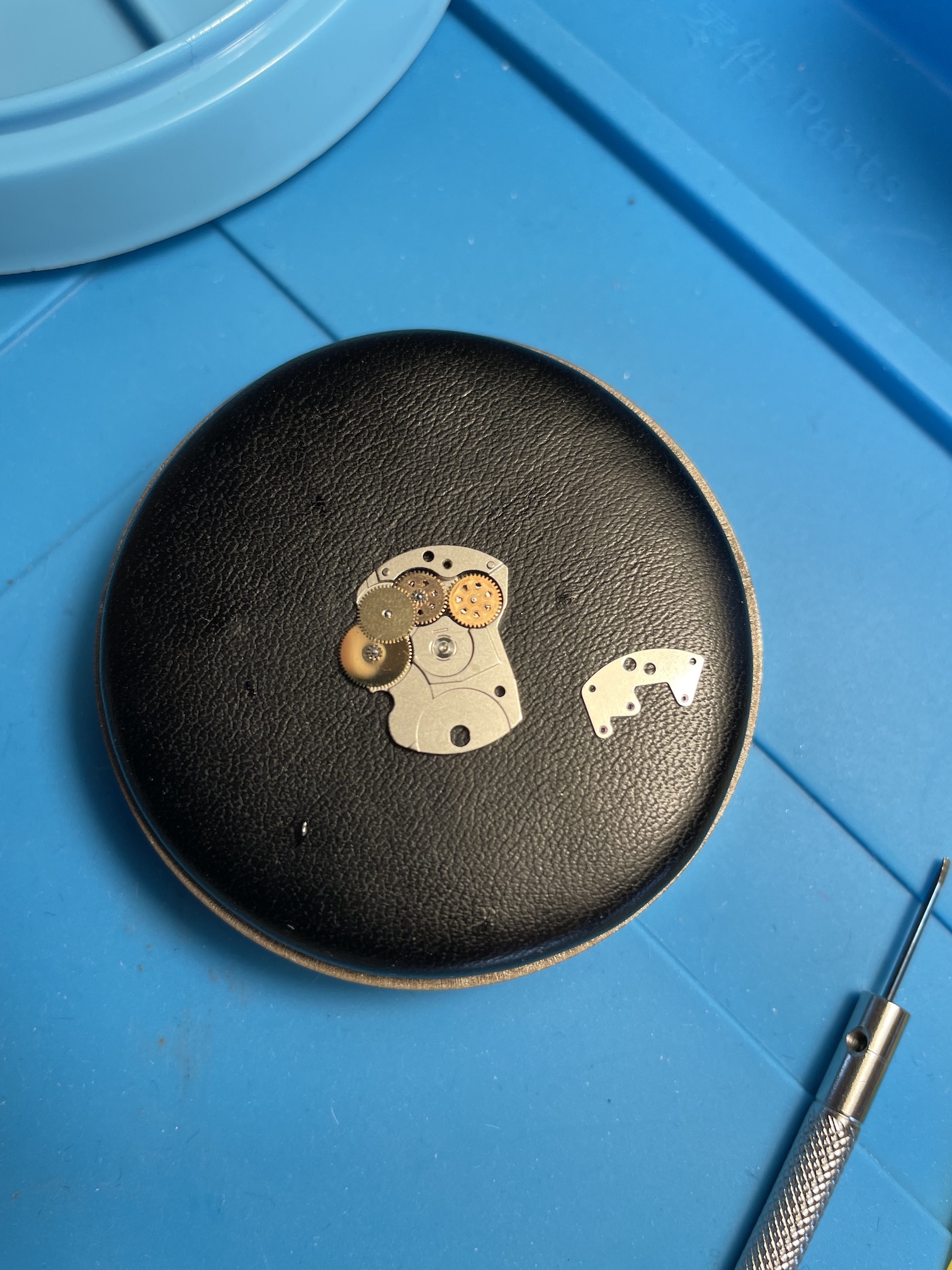
Then I put the automatic bridge back on the movement and screw it on, but not tight yet (with the 2 dark screws). I push it down slightly (!) and turn the crown to wind the movement, and see if the gears engage. If everything fits, I tighten the dark 2 screws and attach the automatic bridge.
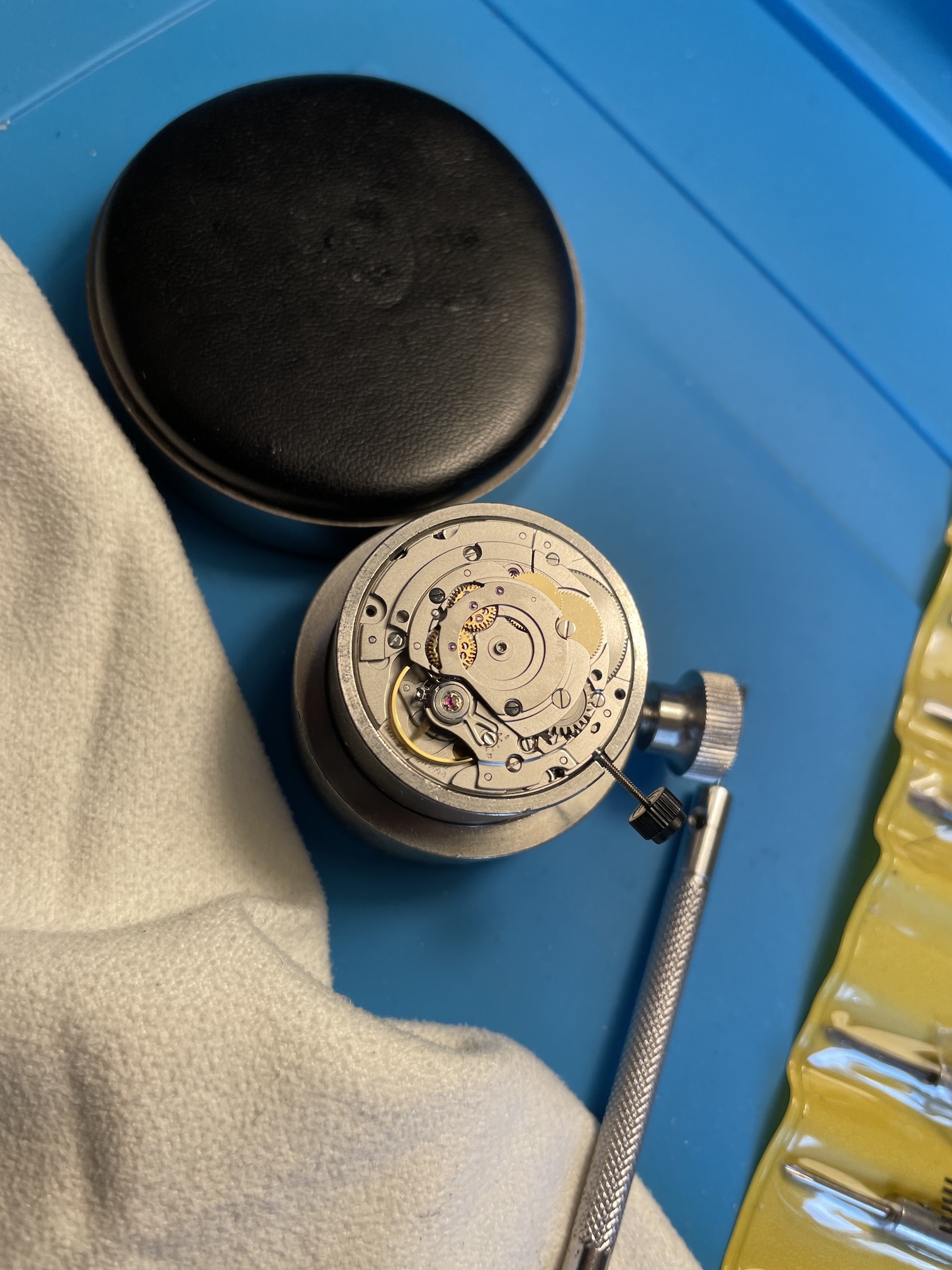

Now the rotor is missing. If necessary, you can clean it with gasoline, rinse it with alcohol, dry it, and then lubricate the ball bearings. Mostly this is not necessary.
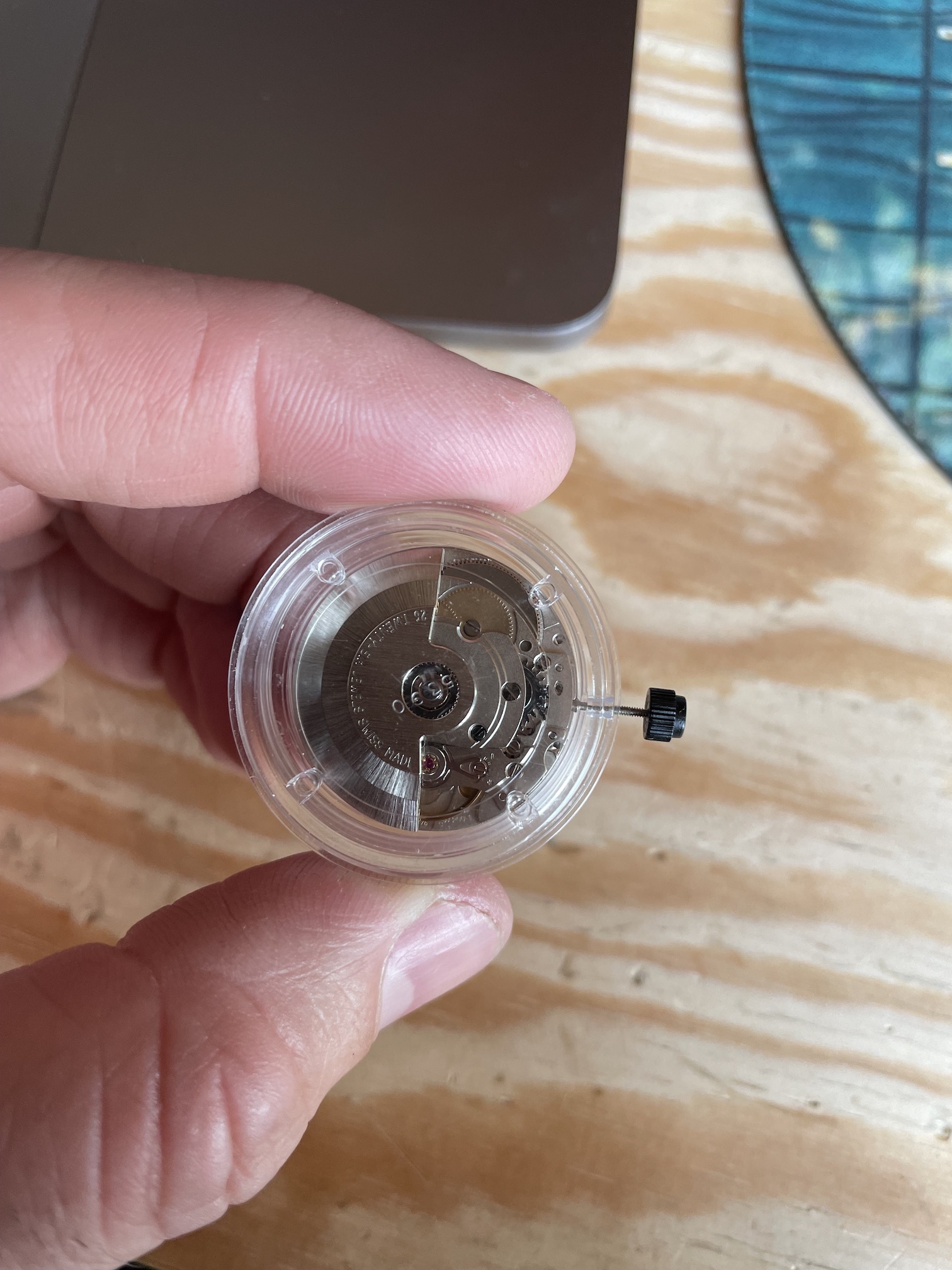
That was it. I hope I could save you a trip to the watchmaker.
With some practice you can do it in no time.
Kind regards
Translated with www.DeepL.com/Translator (free version)
Many of you despair from the search for a watchmaker. And actually every time an Asian ETA movement flutters into the house you can assume that it feels sandy within the shortest time when winding up. In most cases, I made the experience (also with VR3135 by the way) that the ratchet wheels are not / not enough lubricated.
How you can easily do this work yourself I show you here.
The work is done on a swiss Sellita SW-200, which is identical to the ETA 2824-2.
You can see the movement here:

It is recommended to create a dust-free working environment and to wear gloves or finger cots. The movement is clamped in a movement holder, or placed on a soft cushion / sponge so that the top side is not scratched. To understand, the top of the movement (where the date ring is) is DOWN here.
First, we remove the oscillator / rotor by loosening the centrally located screw and using the tweezers to lift the rotor off.

Then we loosen the 2 dark screws that fix the automatics to the PCB and lift the automatics off.



To clean the individual parts, I use cleaning gasoline, together with a very soft toothbrush. For rinsing I use 70% alcohol.

I loosen the only screw on the automatic bridge that holds the 4 wheels together and loosen the wheels. I put all parts except the screw into the cleaning benzine.
After a minute, I brush the gears with the cleaning toothbrush and the corners of the board. I leave the stones (pink) untouched.
Then I take all the components out of the gasoline bath and put them into the alcohol.
This removes any remaining gasoline stains from the components.


I take each part out of the alcohol bath and blow it dry. I get all parts ready to assemble the automatic.


I put a little D5 on the post here:

After that, there are 2 options for oiling the stones. I don't really trust the ASIA ETAs in this respect, and already put some oil on the inside. With real ETA or Sellita I oil nothing at all, only after the complete assembly then from both outer sides.
So I mount the ratchet wheels, the ratchet wheel and the reduction wheel.
Then the bridge comes over it and is attached to the screw.
Depending on whether you have already oiled before or not, you should do that now at the latest.
I use Moebius 9010, then check with a toothpick or ceramic tweezers that all wheels turn properly.





Then I put the automatic bridge back on the movement and screw it on, but not tight yet (with the 2 dark screws). I push it down slightly (!) and turn the crown to wind the movement, and see if the gears engage. If everything fits, I tighten the dark 2 screws and attach the automatic bridge.


Now the rotor is missing. If necessary, you can clean it with gasoline, rinse it with alcohol, dry it, and then lubricate the ball bearings. Mostly this is not necessary.

That was it. I hope I could save you a trip to the watchmaker.
With some practice you can do it in no time.
Kind regards
Translated with www.DeepL.com/Translator (free version)

